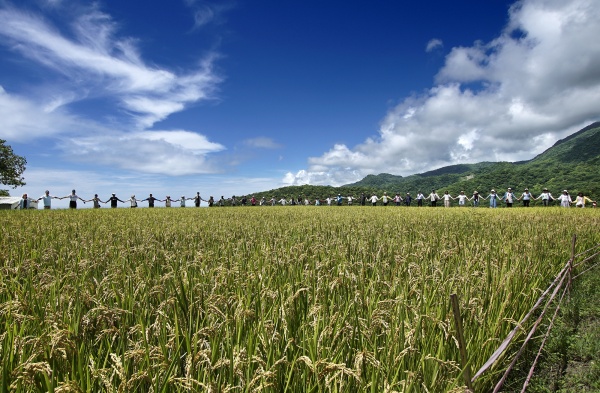ACTIVITIES

TOPACTIVITIESIPSI Collaborative ActivitiesSecuring customary sustainable use by indigenous peoples and local communities and monitoring progre...
Securing customary sustainable use by indigenous peoples and local communities and monitoring progress through relevant indicators
Lead organizations: Forest Peoples Programme and TEBTEBBA Foundation
Other participating organizations: Association for Nature and Sustainable Development (ANDES)
This activity will focus on supporting indigenous and local communities’ initiatives to secure customary sustainable use practices and customary resource management of biodiversity (in accordance with CBD Article 10(c)), and monitoring progress through the use of relevant indicators. The activity will promote active collaboration among governments, international organisations, academe, NGOs and indigenous peoples and local communities.
Objective: Progress in national and sub-national promotion and implementation of customary sustainable use practices and customary resource management is monitored using indicators on traditional knowledge adopted by the CBD:
- Status and trends of linguistic diversity and numbers of speakers of indigenous languages
- Status and trends in the practice of traditional occupations
- Status and trends in land-use change and land tenure in the traditional territories of indigenous and local communities
In addition, with the new emphasis being placed by Parties on the implementation of Article 10, COP10 also called for the development of appropriate indicators for customary sustainable use and to report on this matter to the Working Group on Article 8(j) and Related Provisions at its seventh meeting, so that this matter can be advanced within the framework of the Aichi Biodiversity Targets and the Strategic Plan for Biodiversity 2011-2020.
(Note: See COP10 Decision X.43 (section on Indicators, paragraph 18) Contribute to CBD Meetings on Monitoring and Indicators of the CBD Strategic Plan with a focus on indicators for the protection and promotion of traditional knowledge and customary sustainable use)
Outcomes:
- CBD Traditional Knowledge indicators adopted and operationalised in some countries, including through pilot activities by indigenous and local communities to monitor progress made in implementing Target 18 of the CBD Strategic Plan.
- Appropriate indicators for customary sustainable use are identified with full and effective participation of indigenous peoples and local communities
Activities:
- Support indigenous and local communities’ initiatives to secure customary sustainable use practices and customary resource management of biodiversity
- Monitor progress in the national and sub-national promotion and implementation of customary sustainable use practices and customary resource management through the use of relevant indicators, including CBD indicators on traditional knowledge
- Identify appropriate indicators for customary sustainable use and submit to CBD Working Group on Article 8(j) and Related Provisions
- Support submissions by the IIFB Working Group on Indicators to WG8j
- Convene national and local workshops on CBD Indicators in Philippines and other countries
- Publish Volume 2 of Resource Book on Indicators Relevant for Indigenous Peoples to highlight national and local experiences
- Establish collaborative work with ILO and FAO and other potential agencies on indicators related to traditional knowledge and customary sustainable use
- Information management systems for traditional knowledge and customary sustainable use indicators data established
Linkages to COP10 Decisions:
This collaborative activity will directly relate to a number of COP10 decisions. Apart from the one on indicators mentioned above, COP10 highlighted the link between the Satoyama Inititiative and Article 10(c) of the CBD as well as the need to address obstacles and devise solutions to protect and encourage customary sustainable use. Decision X.32:
7. Recognizes and supports further discussion, analysis and understanding of the Satoyama Initiative to further disseminate knowledge, build capacity and promote projects and programmes for the sustainable use of biological resources, and promotes synergy of the Satoyama Initiative with other initiatives or activities including the Man and the Biosphere Programme of the United Nations Educational, Scientific and Cultural Organization, the International Model Forest Network, and other initiatives that include community conserved areas that are developed and managed by local and indigenous communities to advance understanding and implementation of customary use in accordance with Article 10 (c) of the Convention on Biological Diversity (emphasis added);
2. Invites Parties and other governments to:
(e) Address obstacles and devise solutions to protect and encourage customary sustainable use of biodiversity by indigenous and local communities, for example by incorporating customary sustainable use of biological diversity by indigenous and local communities into national biodiversity strategies, policies, and actions plans…
Clusters to be allocated
Cluster 3 (Indicators research) and Cluster 5 (On-the-ground activities)
IPSI member organisations to be involved
Tebtebba Foundation and Forest Peoples Programme. Other IPSI members are welcome to join.
Timeframe
July 2011 – June 2014 (or end of 2014 so we cover period until COP12)?
Contact details
Ms Joji Carino, Tebtebba Foundation, email: tongtong@gn.apc.org, jojicarino@mac.com
Dr. Maurizio Farhan Ferrari, Forest Peoples Programme, email: maurizio@forestpeoples.org


